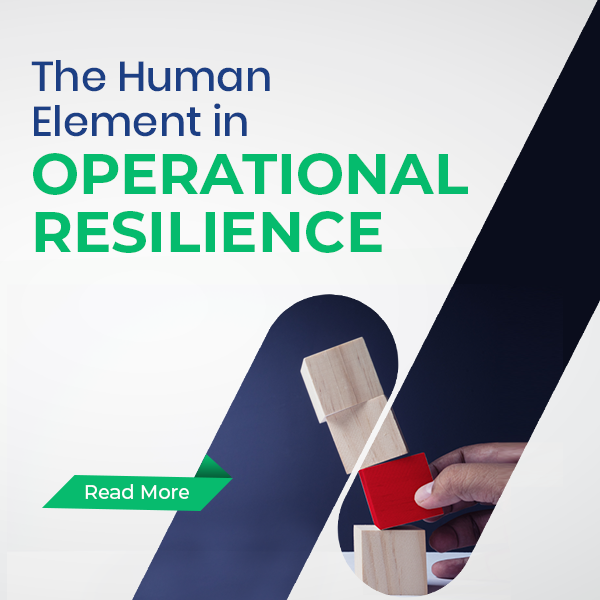In the fast-paced world of commercial banking, staying ahead of the curve is paramount. One area where innovation is making significant strides is in escrow management. Traditionally, managing escrow challenges accounts was a laborious and time-consuming process, fraught with challenges. However, the advent of technology has paved the way for a transformative solution: Escrow Automation. In this blog post, we’ll explore the evolution of escrow management, the challenges faced in the traditional process, the integration of automation in commercial banking, real-world success stories, the current landscape of escrow automation, and the future trends shaping this dynamic industry.
Escrow Automation: Transforming Commercial Escrow Banking
Escrow automation is bringing in a revolutionary era of efficiency and security and changing the face of commercial banking procedures. Modern digital escrow management that makes use of cutting-edge technology like blockchain, smart contracts, and artificial intelligence is replacing the laborious manual paperwork and verification procedures of traditional escrow services. This change drastically lowers the possibility of errors and fraud while speeding up transaction times.
Commercial banks with automated escrow management can guarantee regulatory compliance, increase client happiness, and promote transparency by automating the complex processes involved in handling escrow accounts. Moreover, increased automation encourages competition in the banking sector, allowing banks to provide creative, quicker, and more dependable services to both consumers and companies.
The Traditional Escrow Management Process
Traditional escrow management involved a multitude of manual tasks, from document verification to fund disbursement. The complexity of these processes often led to delays, errors, and increased operational costs for banks and their clients. Moreover, the risk of discrepancies loomed large, making it imperative to seek more efficient solutions.
Addressing Common Escrow Challenges in Traditional Escrow Management
In the traditional model, banks encountered various challenges, such as delayed transactions, a lack of transparency, and an increased likelihood of errors. These challenges not only affected customer satisfaction but also posed a threat to the bank’s reputation. Automated Escrow Management emerged as the answer to these woes, promising streamlined processes, enhanced accuracy, and an improved customer experience.
Harnessing Technology: The Power of Automation in Escrow Management
There are several advantages to automating escrow administration. Automated escrow management software can precisely manage repetitive activities, guaranteeing accuracy and lowering the possibility of human error.
Moreover, automated escrow management also makes real-time tracking possible, providing stakeholders with safe, transparent access to transaction data. Additionally, these automated systems ensure efficient monitoring and enhance accountability. Furthermore, by offering real-time updates, stakeholders can make informed decisions promptly. Consequently, this streamlined process not only improves transparency but also fosters trust among all parties involved in the transactions. These developments enable banks to provide their customers with speedier, more dependable services.
A Roadmap to Automation Integration in Commercial Banking
Strategic execution and meticulous preparation are necessary for escrow automation implementation. Banks require a plan that addresses personnel training, technology selection, and smooth system integration. Commercial banks can enhance their escrow services and streamline their operations by allocating resources towards comprehensive automation solutions.
Real-World Success Stories: Banks Embracing Escrow Automation
Our solution in action
With a variety of features intended to speed up and secure real estate transactions, automated escrow account management platforms are at the forefront of this digital shift.
Let’s dive into how our Autoescrow is a game changer.
Our distinguished client, one of the UAE’s largest banks, with a workforce exceeding 9,000 professionals and a customer base of 2 million, recently navigated the burgeoning real estate market surge. In August alone, the bank facilitated an impressive 33.62 billion AED worth of real estate transactions. However, manual escrow management presented challenges, including missed regulatory reporting and transactional delays. The introduction of our Autoescrow solution revolutionized operations, automating real estate, owner’s associations, and commercial escrow account management. Within six months, the client achieved remarkable results, including real-time regulatory reporting, seamless integration with the Dubai Land Department’s Mollak system, and virtual account integration for efficient fund classification.
Navigating the Automation Landscape: Challenges and Solutions
Although escrow automation has many advantages, navigating the automation world has its own set of difficulties. Banks must address concerns about system integration, regulatory compliance, and data security. Fortunately, complete solutions are available to ensure a smooth transition to automation.
Four significant aspects of the automation landscape: RERA (Real Estate Regulation and Development Act) and HOA (Homeowners Association), Commercial Escrow Management and Insurance Escrow Management
RERA (Real Estate Regulation and Development Act): Challenges and Solutions
Challenge:
In 2016, India passed the Real Estate (Regulation and Development) Act, or RERA, to improve the real estate industry’s accountability, openness, and efficiency. RERA has come a long way in safeguarding the rights of buyers and encouraging equitable practices, but it still has several obstacles to overcome:
1) Delayed Implementations: RERA’s efficacy has been hampered by delays in several Indian states’ implementation. The act’s goals are undermined in some areas by its sluggish adoption and inadequate enforcement.
2) Inadequate Coverage: RERA mostly addresses projects about residential real estate. RERA excludes commercial projects and private builders building homes for personal use, which leaves a sizable chunk of the real estate sector unaffected.
3) Builder-Buyer Disputes: Although RERA includes measures for handling disputes between builders and buyers, the legal procedures involved can be laborious and time-consuming. A lot of homebuyers still have trouble getting their problems fixed on time.
4) Imprecise Definitions: Several of RERA’s terminology and clauses are ambiguous, which can cause misunderstandings and disagreements.
Solution: Through a strong, automated, and compliant transactional ecosystem, our solution improves operations and customer experience while automating banks’ real estate escrow management. It is compatible with core banking, TAS, accounting, and compliance monitoring banking systems.
HOA (Homeowners Association): Challenges and Solutions
Challenge: Homeowners associations play a crucial role in managing shared spaces and amenities within residential communities. However, conflicts often arise within HOAs regarding decision-making, budget management, and enforcing community rules, leading to disputes and discord among residents.
Solution: The solution automates budgeting, receivable classification, real-time regulatory reports (Mollak & RERA), account formation and maintenance, and owner association escrow management, helping banks operate more efficiently. It is compatible with Mollak, CBS, accounting, compliance monitoring, and other banking and regulatory systems.
Commercial Escrow Management: Challenges and Solutions
Challenge: Managing commercial escrows is especially important for intricate business deals like mergers and acquisitions. The following are some particular difficulties that come with managing commercial escrow in the context of M&A:
1) Complex Financial Transactions: A significant amount of money is exchanged during mergers and acquisitions. It is imperative to guarantee the safekeeping and accurate distribution of the cash, as any mistakes may result in serious financial ramifications.
2) Compliance and Due Diligence: To guarantee regulatory compliance, commercial escrow in M&A transactions necessitates thorough due diligence. This entails fulfilling all legal obligations, confirming the entities’ financial and legal standing, and carrying out anti-money laundering (AML) investigations.
3) Sensitive Information: Private and sensitive information are frequently involved in M&A deals. It is difficult and calls for stringent security measures to keep this information secure throughout the escrow procedure.
4) Legal and Regulatory Complexity: M&A deals must comply with a wide range of jurisdiction-specific legal and regulatory requirements.
Solution: The Solution streamlines setup, standing orders, and receivable categorization while automating banks’ Commercial Escrow & TRA Account. Moreover, it interfaces with essential banking, accounting, and compliance monitoring systems.
Insurance Escrow Management – Challenges and Solutions
Challenge: Insurance escrow administration comes with its own set of difficulties, especially when it comes to insurance policies and claims. The following are some particular difficulties in managing insurance escrows:
1) Policy Premiums and Payments: It might be difficult to make sure that policyholders pay their insurance premiums on schedule and that the money is kept safe until it’s time for them to be paid. Policy gaps or problems with coverage may result from missing or late payments.
2) Claims Disbursement: When policyholders submit claims, the payments made in response to such claims need to be handled effectively. This entails confirming the validity of the claim, determining coverage, and quickly releasing payments.
3) Regulatory Compliance: There are many laws and regulations governing the insurance industry, and they differ from jurisdiction to jurisdiction. It might be difficult to comply with certain rules, such as consumer protection laws and insurance licensing.
4) Terms of Escrow Agreements: It might be difficult to write and oversee insurance escrow agreements that correctly mirror the terms and conditions of insurance policies.
Solution: Through the automation of account setup and management, auto-premium deposits and payments, claim settlements, audits and reconciliations, and regulatory reports, the solution assists banks in automating their insurance escrow management and enhancing operational efficiency. Additionally, it interfaces with core banking, accounting, and compliance monitoring systems, among other banking systems.
The Future of Escrow Automation: Emerging Trends and Technologies
Looking ahead, the future of escrow automation is promising. Emerging technologies such as artificial intelligence and machine learning are set to further revolutionize the escrow landscape, and machine learning algorithms can analyze enormous volumes of data due to their decentralized and tamper-proof nature. This allows banks to make data-driven choices and precisely predict client needs. This provides increased security and enables financial organizations to use cutting-edge technologies to make better decisions.
Key Takeaway
Escrow automation is more than just a technical development; for commercial banks looking to maintain their competitive edge and offer top-notch client services, it is a strategic need. Banks can overcome long-standing obstacles, improve operational effectiveness, and ensure the sustainability of their escrow management procedures by embracing automation. Escrow automation is a prime example of how technology may revolutionize the banking sector and users in a more streamlined, customer-focused future.
To sum up, the transition of commercial banking from manual escrow administration to automation is a big step forward. Banks may transform their escrow management and guarantee a smooth experience for stakeholders and clients by comprehending the obstacles, adopting creative solutions, and keeping up with new technological advancements.
Are you having a tough time managing Escrow Challenges in Commercial Banking?
Discover our comprehensive corporate escrow management suite, AutoEscrow. It is a comprehensive software solution designed for banks and NBFCs, offering fully automated escrow and trust account management. The software includes specialized modules for CBUAE Insurance Escrow (registered under no. CBUAE/BSD/N/2022/4775) and Mollak, ensuring compliance with RERA regulations.













